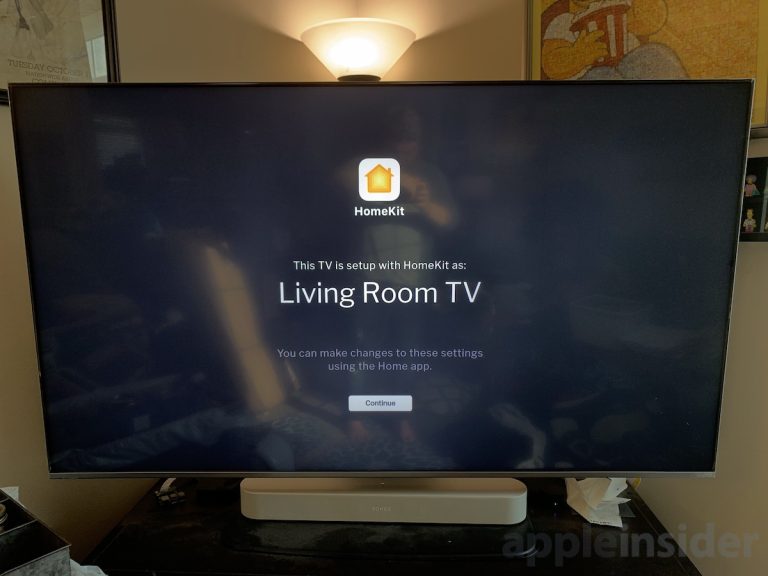How to Make a TV Stand Taller – Step by Step Guide
Last Updated on November 1, 2023 by Jhonni Jets

Have you ever bought a nice new flat screen TV, brought it home, and realized your existing TV stand is way too short? Mounting the TV on the wall isn’t an option? Don’t worry, there are several easy ways to increase the height of a TV stand without having to buy a brand new one.
In this guide, I’ll walk through various methods to make a TV stand taller. We’ll look at attaching risers, using legs extenders, stacking on wood, and other clever solutions. Follow along to learn how to get your TV up to the ideal viewing height with simple modifications to your current stand.
Table of Content
Why Raise the Height of Your TV Stand?
Before getting into the how-to, let’s look at why you might need a taller TV stand:
- Better ergonomics – Having your TV at eye level reduces neck and eye strain from constantly looking down. Proper height improves posture.
- Enhances viewing – Angling the TV slightly downward gives you the best head-on view. Reduces glare from overhead lighting.
- Matches viewing distance – TVs should be 15-18 inches from floor for every 10 feet of distance from your seats to prevent excessive neck craning.
- Accommodates larger TV – If upgraded to a bigger screen, matching the recommended height is important.
- Improves aesthetics – A TV stand that’s too short can look out of place and off-balance. More height creates nicer sightlines.
The ideal TV stand height depends on your specific room layout and TV size, but the general rule is putting the center of the screen around 42 inches off the ground. Read on to learn techniques to raise a stand to hit this eye level sweet spot.
Using Riser Feet or Pucks
One of the easiest ways to add a few inches of height to a TV stand is attaching riser feet or pucks. These small attachments sit under the existing stand legs to lift the entire unit up higher.
Benefits:
- Simple installation – Just slide under legs or screw into bottom of stand
- Many height options – Risers vary from 1 inch to over 6 inches tall
- Inexpensive – Pricing starts at around $10 for a set of 4 risers
To use riser feet:
- Measure how much extra height you need to achieve ideal TV viewing level.
- Purchase appropriate sized riser feet based on this height differential, while also accounting for maximum weight load.
- Follow included instructions to securely attach the risers under existing stand legs using screws or high-strength adhesive.
- Carefully set TV stand onto risers, testing stability before placing expensive TV on top.
- Optionally, further secure stand to risers using L-brackets on the inside to prevent slipping.
Some things to keep in mind when using risers:
- Use diagonal bracing between risers or an L-bracket inside to prevent lateral slipping.
- Only use heights and weight loads recommended by the riser manufacturer.
- Place risers under all legs or corners to distribute weight evenly and prevent tipping.
- Consider rounding sharp edges or padding contact points to avoid marring floors.
Adding some simple riser feet is a quick, affordable way to lift a TV stand a few valuable inches. Just be sure to follow safety guidelines to create a stable base for your precious television.
Using Furniture Leg Extenders
Furniture leg extenders offer another simple way to add height to a TV stand. These attach directly onto existing legs.
Benefits:
- Very easy to install – Just screw or bolt onto legs
- Offer a wide range of height increments – Typically 4 to 10 inches
- Provide great stability with direct attachment to legs
To use leg extenders:
- Assess required added height based on ideal viewing position. Account for thickness of existing legs.
- Select leg extenders that match or just exceed needed height. Ensure weight rating exceeds full load.
- Detach any base molding or trim around bottom of TV stand legs to enable extender attachment.
- Bolt or screw extenders onto all legs per included instructions. Ensure very secure attachment.
- Replace any trim pieces removed earlier. Set TV stand down gently onto floor.
Keep these tips in mind:
- Extenders are available for both round and square stand legs. Measure accordingly.
- Consider an enamel coat on steel extenders to prevent possible rusting.
- If leg diameter is larger than extender attachment opening, grind down legs or use reducers.
Furniture leg extenders provide slightly more height than risers with the added benefit of increased stability from direct leg mounting.
Stacking Wood Blocks Under Legs
For a budget-friendly approach requiring minimal tools, you can make your own risers out of spare wood.
Benefits:
- Very inexpensive solution using scrap wood
- Lets you customize height based on wood thickness
- Can finish or paint wood to match TV stand
Here’s how to make DIY wood risers:
- Measure desired added stand height. Account for leg shape and thickness.
- Cut at least 4 matching wood blocks exceeding this height by around half an inch. Aim for identical cuts.
- Sand blocks smooth and square off the edges. This prevents splinters and rocking.
- Finish or paint blocks to desired look – unfinished, stained, painted, etc.
- Allow finish to fully cure before attaching blocks under legs with high strength adhesive.
- Add braces between blocks or angle brackets inside for stability if needed.
- Carefully set stand onto wood blocks, checking for any wobbling or instability.
Some tips for wood risers:
- Use a hardwood like oak for maximum support – Avoid soft woods like pine.
- Match grain direction on all blocks to maintain appearance.
- Consider rounding top edges for a more finished look.
- If bonding fails over time, drive wood screws through legs into blocks as a backup attachment method.
Wood blocks make for a simple and customizable way to increase TV stand height on a budget.
Placing Stand on a Platform
For a more involved but still DIY-friendly option, you can create a wooden platform to place your entire TV stand on top of.
Benefits:
- Allows significant height increase – Platform can be any thickness
- Very sturdy and stable – Supports whole stand, not just legs
- Makes use of simple carpentry techniques
Follow these steps to make a TV stand platform:
- Measure overall stand dimensions and desired height to determine platform size and thickness.
- Purchase enough wooden boards to construct a box platform slightly larger than the stand footprint.
- Cut boards to required lengths using a power miter saw. Precise, clean cuts prevent uneven surfaces.
- Pre-drill holes and construct platform box using wood screws in corners and every few inches along joints.
- Fill any gaps with wood putty. Sand to smooth. Finish edges and apply protective sealant.
- Allow finish to dry fully. Carefully place TV stand centered onto completed platform.
Some best practices for a DIY stand platform:
- Use thick plywood or join multiple thinner boards for maximum strength.
- Attach a vertical support bracket under platform for stability with very heavy TVs.
- Place felt pad under platform to prevent slipping and floor scratches.
- Make platform larger than stand base for best support and aesthetics.
Constructing a wooden platform provides vertical adjustability limited only by the height of your boards. And you can stain or paint for a custom look.
Using a Wall Mount with Low Profile Stand
If you decide to mount your TV on the wall, but still want a stand underneath, you can create extra space between by using a low profile TV stand designed specifically for wall mounts.
Benefits:
- Allows optimal ergonomic positioning, even with mounted TV
- Many affordable low profile stand options
- Avoid cost and hassle of new floor-standing TV stand
To incorporate a low profile wall mount TV stand:
- Purchase recommended wall mount and compatible low profile stand from brands like Sanus or Fitueyes.
- Install wall mount per instructions at desired height.
- Using a helper, hang TV onto wall mount brackets.
- Position low profile stand directly underneath mounted TV.
- Carefully run cables down through stand openings for concealed wiring.
Tips for this setup:
- Pick a stand with retractable shelves to allow pushing back against wall when not in use.
- Ensure mount is securely anchored into studs to support weight of TV and accessories.
- Consider an articulating mount for maximum adjustability.
A wall mount paired with the right low profile stand maximizes space efficiency while putting the TV at the perfect height.
Adjustable Height TV Stands
If you prefer an integrated TV stand solution, there are now many options with manual or electric height adjustability.
Benefits:
- Motorized stands provide push button height control
- Manual options allow smooth and easy height changes
- Provides optimal ergonomic positioning for any user
Here is an overview of adjustable TV stand styles:
- Manual pneumatic: Pump handle raises and lowers stand; release valve locks in place.
- Manual spring: Counterbalanced lift assist for easy height changes without power.
- Electric motor: Digital controls allow remote control of electric lift mechanism.
To incorporate an adjustable stand:
- Pick electric or manual model with sufficient height range and lift capacity.
- Assemble stand per included instructions. Many are tool-free and simple.
- Place TV onto stand, securing with provided hardware.
- Set initial height to eye level based on seating distance.
- Adjust up or down per user needs at any time.
Keep these tips in mind for adjustable stands:
- Many have built-in cable management to hide wires from view.
- Shelves may need to be removed or swiveled out of the way for full height adjustments.
- Ensure electric models have safety stops to prevent raising too high.
Adjustable height TV stands deliver the ultimate flexibility in optimizing viewing position in any room.
Alternative Ways to Raise TV Height
There are a few less conventional ways to add some extra inches if the above ideas don’t appeal:
- Use an angled wall mount and extend lower end out from wall on a pole or bracket.
- Place TV on a higher table or shelving unit so bottom is at needed height.
- Build a custom alcove or nook to recess TV stand and TV into the wall at desired elevation.
- Construct a small raised platform just large enough for the TV stand’s legs to gain a few inches.
These unorthodox methods illustrate that where there’s a will, there’s usually a way to get your TV placed at the optimal viewing position with a little creativity!
Get Your TV to the Right Height!
No more cricking your neck or getting eyestrain from gazing downward at a TV that’s too low. With this range of techniques, you can easily raise up an existing TV stand to achieve the ideal viewing height.
Here are some final tips to pick the best method for your needs:
- Risers or extenders – Simple and inexpensive height boost of a few inches
- Wood blocks – Highly customizable DIY approach to add moderate height
- Platform – Maximum adjustability capable of big height increases
- Adjustable stand – Ultimate convenience for reconfiguring on demand
So measure how high your current stand needs to go, choose a suitable technique, and get ready to enjoy your TV positioned just right. Your neck and eyes will thank you!
Hopefully these suggestions give you some great options to make a TV stand taller. Let me know if you have any other questions!






